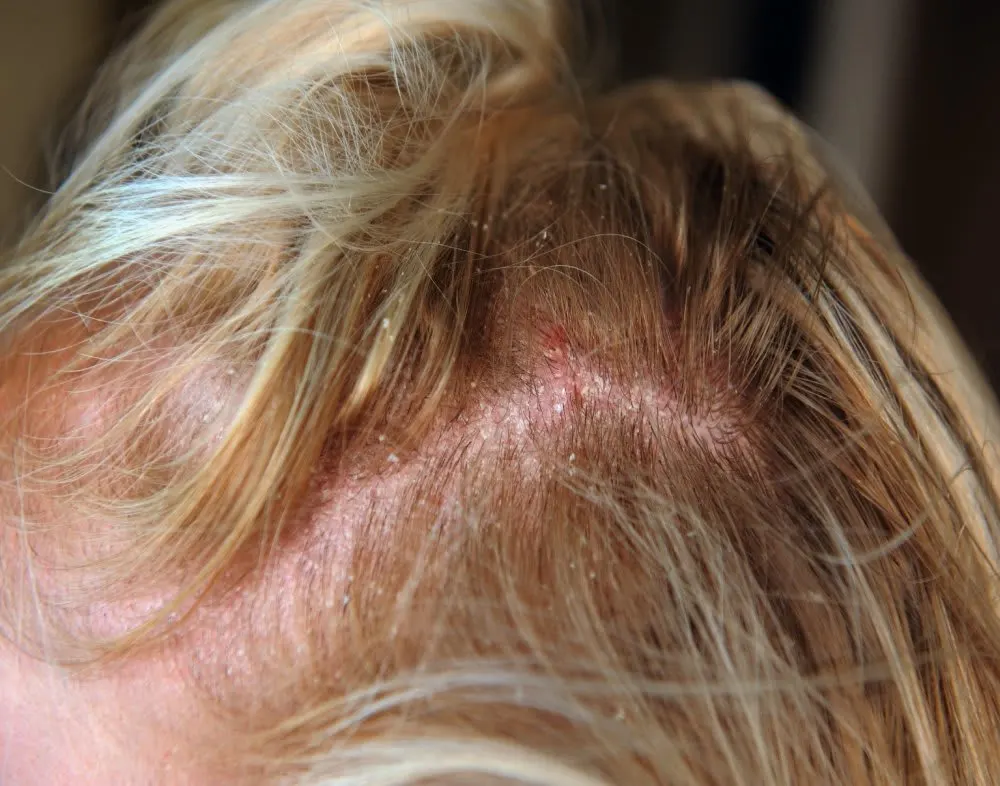The Do’s And Don’ts Of Haircare While Dealing With Scalp Redness
There exist those rare moments when you’re styling your hair and spot some redness on your scalp. You part your hair and find the stuff of nightmares underneath.
Red patches on the scalp are actually more common that you might realise. It usually gets hidden under our hair, so we don’t realise how often it makes an appearance. But when we do realise, it can make us lose our sleep from worry.

There can be a host of reasons for this redness to make an appearance on your scalp. Some easily treated while some are severe scalp conditions. But the main thing is to understand the cause of this redness, to find the right solution.
- Red scalp dandruff – The most likely culprit for red patches is dandruff. It is triggered by Malassezia Globosa, the oil-eating fungus, leading to the occurrence of scalp redness along with the dirty white flakes.
- Sunburn – When your skin is exposed to the harsh rays of direct sunlight, it can cook your scalp to a tender crisp. A red itchy scalp is the general outcome of sunburnt skin.
- Seborrheic Dermatitis or Eczema can be one of the reasons for your red itchy scalp. With excessive oil production you’ll find the appearance a red scalp with thick scales.
- Psoriasis – It is a common inflammation of your scalp, which can even affect other parts of your body. It is accompanied by an itchy scalp, soreness and red patches.
- Allergic reaction – Your scalp might be sensitive and could react to different hair products, leading to a breakout. It can take the form of a rash or patches.
- Folliculitis – A skin infection that only affects your hair follicles, it can take on the shape of red blotches near the roots of your hair. It almost looks like acne for your scalp.
- Exposure to the elements – Bad hair hygiene can actually create a dry and damaged scalp, which is susceptible to the whims of nature. Extreme heat or cold can trigger a red itchy scalp.
We’ll discuss what to do, but it is equally important to understand what not to do.
- Don’t scratch, as this will damage your scalp and aggravate the existing scalp problem. It also transfers dirt and oils from your fingers on to your scalp.
- Try going a few days without hair products, to see if that is the cause of an allergic reaction.
- Don’t try combining multiple home remedies in your hunt for an itchy scalp cure. Lathering random ingredients together can actually make the situation much worse.
- Avoid hair styling products like blow-dryers, straighteners and curling irons. The heat from these can become a cause for prolonging your scalp redness.
- Don’t expose your scalp to pollution and dirt. Cover it up if you’re stepping out, but with a breathable fabric as you don’t want the scalp to overheat and start to sweat.
- Don’t stress. The tension that you carry can actually make things worse, as it triggers your body to secrete different hormones. Everything has a solution and your woes are temporary.
The first and most important thing is to understand what the problem is. It could be any of the issues listed above, so you must be considerate in your approach. You can start by ruling out things. If you’ve tried a new product or increased the use of some product, stop using that to see if it’s an allergic reaction. Maybe you’ve eaten something that has triggered it.
There are some home remedies that you can employ as well. Aloe Vera and Neem are known to be like a soothing balm for an itchy scalp. Their anti-fungal and anti-bacterial properties can get rid of any underlying concerns. Soothing essential oils, like Argan oil, can also be used to treat certain ailments. You can massage it directly into your scalp, focussing on the red patches.
Poor hair hygiene is usually the cause of most of your issues. Incorporating anti-dandruff scalp shampoos in your hair regimen, like the Neem shampoo or the Supreme Scalp Soothing shampoo, can retune the health of your hair and even answer your doubts on how to get rid of dandruff. For most people, the source of their worries is generally red scalp dandruff and using a good shampoo is vital in cleaning your hair of any excess oil and dirt, preventing dandruff and scalp redness from coming back. You can use conditioners to open up the hair once your scalp has got rid of red dandruff. If your issues still don’t go away, it is recommended to visit a doctor.
It might seem like a terrifying moment but red patches on the scalp are extremely frequent and you aren’t alone. The blame generally falls on poor hair care due to laziness, where we just let it get out of control. But this is something that you can easily reclaim back, allowing your worries to simply vanish into thin air.



